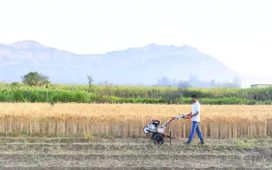According to the agriculture ministry’s third advance estimate, kharif rice production stood at 110.032 million tonnes in FY23.
Nayek said that the next 15 days are critical for the paddy crop and it should rain well to fill the deficiency gap. “The rain should be well-distributed so that transplanting and subsequent growth of the paddy crop is not hampered. In Odisha, the sowing has been delayed due to less rains. Similarly, many districts that are located upland in the rice growing states in the eastern part of the country have received less rain.”

According to India Meteorological Department figures, 267 districts across India received deficient rains between June 1 and August 24. Of them, 19 are in West Bengal, 11 districts are in Odisha, 19 in Jharkhand, 30 in Bihar, 32 in Uttar Pradesh and 11 in Chhattisgarh. The traditional rice varieties take about 160-200 days to mature and are highly susceptible to climatic events. Improved short duration varieties could be harvested in about 90-110 days.
The agriculture ministry data as on July 30 shows that the area under sowing of kharif rice increased 4.33% to 23.758 million hectares, which apparently ensures higher production. But lesser rains in August have emerged as a worry for the overall production of rice. If it does not rain then the prices of rice will rule high, experts said.
“A deficit of around 7 million tonnes in global rice production is estimated in FY24 following the emergence of El Nino and unfavourable climatic conditions, which will push up international rice prices to a decadal high,” said Manish Pathak, vice president and sector head, corporate sector ratings at ICRA.
“Prices are set to rally further after the ban by the Centre on the export of non-basmati white rice, which constituted around 30% of overall rice exports from India in FY23.”










